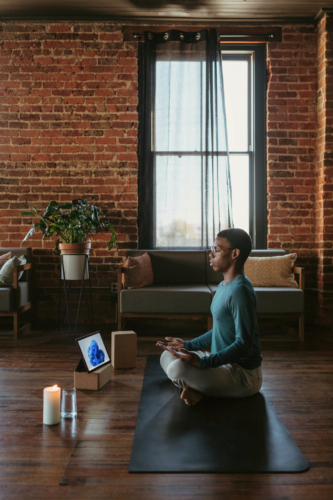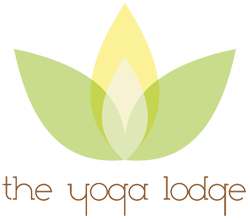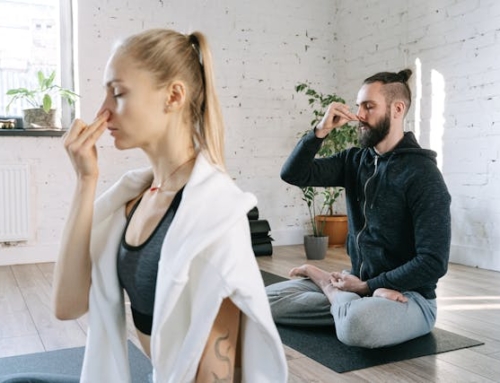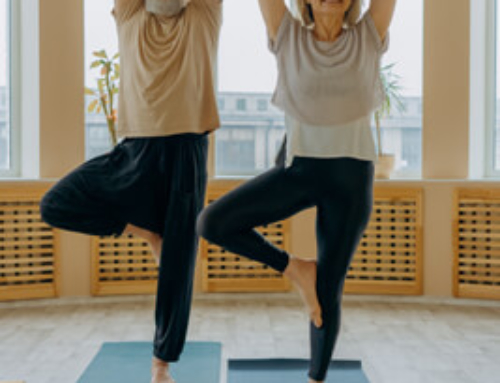The Constructiveness Of Yoga

After my first two Blogs it felt appropriate to share the findings of what Harvard University Medical School Report says, all about the constructiveness of Yoga. It sums it up nicely. To find out more read on.
Harvard University Medical School
Yoga may be the antidote for what ails you. And we’re not just talking about a single problem like back pain or insomnia. According to research, up to 90% of all doctor visits can be attributed to stress-related complaints. In our always-plugged-in, stressed-out lives, yoga provides the respite to make you feel better—not just physically, but mentally and emotionally, too. It is arguably the one tool that we have that simultaneously improves strength, balance, and flexibility, while helping to dial back negative self- talk and ruminations as well as stress from deadlines, financial issues, and relationships.
A 2015 Harvard study in the journal PLOS One, when researchers compared medical costs for 4,400 people before and after relaxation training, which included meditation and yoga, they found that people used 43% fewer medical services and reaped estimated savings ranging from $640 to $25,500 per person each year.
Yoga Is Easier Than You Think
Yoga is easier to do than you might think. Photographs of advanced yogic practices may intimidate you, with their gravity-defying postures and pretzel-like contortions. However, basic yoga is accessible to almost everyone and can even be done in a chair.
In fact, the more physical limitations you have, the more important it is for you to practice yoga. No pill has the power to improve so many areas of your life at once.
Imagine what could happen if you used yoga like you use your toothbrush—for routine self-care, on a daily basis.
In contrast to the daily pressures and demands of modern life, yoga gives you an opportunity to step back and simply be present in the moment—and science is discovering a myriad of benefits to doing that.
Here are some of the demonstrated ways that yoga can help you:
- Improved health. Yoga works on multiple systems of the body at once, so its effects are widespread. Among other things, it can reduce your risk of heart disease and boost your immunity, while easing back pain and helping to conquer stress eating.
- Greater well-being. Several studies show that the more frequently you practice yoga, the more you experience positive emotions, along with greater satisfaction in life, joy, energy, improved quality of life, and an enhanced sense of well-being.
What Is Yoga?
Yoga means many things to many people. Literally, the Sanskrit term means “to yoke,” but other definitions include to hold, to join, to unite, and to cause divine union. According to some experts, the term yoga probably has more meanings than any other Sanskrit word. So, it comes as no surprise that there is some confusion about what yoga really is.
Most Americans think of yoga as a workout, focusing primarily on the physical practice that is portrayed in media images. Four of the top five reasons that people start yoga are physical ones—flexibility, general fitness, health improvements, and physical fitness, according to the 2012 Yoga in America survey conducted by Yoga Journal. (The final one is stress relief.)
But yoga is more than just a workout. Yoga is a mind-body practice that has become one of the top 10 complementary approaches to health in the US, according to the National Institutes of Health. It’s an integration of mind, body, and spirit. Its goals are to cultivate balance, calm, harmony, and awareness— and, in classic yoga traditions, to strive for the attainment of selflessness and spiritual enlightenment.
At the heart of it, yoga is about personal transformation. For those who focus mainly on the physical postures, the transformation may be about getting stronger or more flexible—and even gentle forms of yoga can help you with these goals. But the true practice of yoga goes beyond that, combining postures with breathing exercises, relaxation, and meditation. By reflecting inwardly, you connect with yourself and the world around you from a different perspective. This self-observation can help you to understand and better respond to or even resolve personal conflicts, anxieties, hopes, and fears. In this manner, yoga can bring more calmness, compassion, and peace to your everyday activities and interactions with others.
For some people, the transformation of yoga involves an entire lifestyle. Such a lifestyle is not about living in yoga pants and taking classes regularly, but about cultivating balance, mindfulness, and healthy behaviours such as eating a vegetarian or vegan diet, drinking little or no alcohol, and abstaining from tobacco.
Yoga’s Connectiveness
However, while yoga has traditionally been associated with Hinduism and Buddhism, it is not a religion—although it has a philosophical basis that many consider spiritual. In one survey, about 37% of respondents listed “seeking a spiritual experience” as a reason for doing yoga. But the spirituality of yoga does not conflict with religious beliefs. Yoga is accepting of all religions and can be combined with any of them. In fact, practicing yoga, which is built on the promotion of being kind and compassionate toward yourself and others, may enable you to better fulfil the tenets of your own religious faith, whatever that may be.
For all these reasons, it’s not surprising to learn that yoga differs from a traditional workout in some important ways. For most workouts, the goal is to do more and work harder. Yoga is more about undoing— relaxing, releasing, and letting go. You don’t have to break a sweat or compete with other people. In fact, when you stop doing that, you’re able to go deeper into your practice and reap more benefits. Instead of letting your mind wander or watching a TV monitor while you’re on the treadmill at the gym, you will engage more fully in what you are doing in the present moment. When you’re focusing in this manner, you are more likely to experience peace, calmness, and joy. Many people take up yoga as a workout, but they stick with it because it makes them happier.
The Four Components Of Yoga
Part of the reason yoga has such broad-ranging benefits is that it has not just one component, but four: postures, breathing practices, deep relaxation, and meditation. Some styles of yoga and some instructors may put a greater emphasis on one component or another. For example, a gym class will likely emphasize the physical postures. But traditional practices include all of them, and you will receive greater benefits if you include more of these components.
Postures (Asanas)
These are the physical positions such as warrior, downward-facing dog, and tree pose that most people associate with a yoga practice. There are standing poses, seated postures, supine positions, forward folds, back bends, balance poses, hip-openers, twists, and inversions. Some of the postures and movements are large and overt, while others are small and subtle—and some are even purely internal or imagined motion. In different types of yoga, asanas are executed in a variety of ways. Some involve holding postures for several minutes. Others require you to move rapidly from one pose to another. No matter how the postures are being done, proper alignment is key to avoiding injuries and maximizing results.

The benefits from postures and movement include improved range of motion, strength, endurance, flexibility, and balance. In addition, they promote body awareness, both of internal sensations and, externally, of your body’s orientation in the space around it.
Breathing Practices (Pranayama)
In many modern yoga practices, the breath is linked to movement as you flow from one posture to the next. But yoga also includes several breathing techniques that may be practiced on their own with-out movement—ranging from very slow and deep breathing to rapid, shallower breaths. In meditation, the breath is often a focal point to help you develop awareness. The type of breathing you do usually depend upon the style of yoga you practice and the desired effect. Some breathing techniques can even be performed throughout the day—for example, while you’re driving or when you’re at work—as a way to calm down and release tension.
Your breath can have a direct physiological effect on your body. Slow, rhythmic breathing activates your parasympathetic nervous system, which promotes a more balanced, relaxed state. Your heart rate slows, and hormones that promote feelings of calm and social bonding increase. The opposite happens with fast, superficial patterns of breathing. Rapid, shallow breaths stimulate the sympathetic nervous system, which governs the fight-or-flight response. As a result, heart rate increases, and stress hormones are released. The most common breathing patterns in yoga are slow and rhythmic and are generally safe for beginners.
Deep Relaxation
While you should feel more relaxed as a session of yoga progresses, specific relaxation techniques are often used at the end of a practice while you lie on your back in a posture called corpse pose. A common technique is progressive muscle relaxation, which involves sequentially and completely relaxing various muscle groups throughout the body.
Yoga nidra is another relaxation technique that combines relaxation with meditation, breath awareness, or guided imagery. It has been referred to as the ultimate relaxation, taking you all the way to a near- sleep-like state.
When you are able to relax your body fully, releasing tension from muscles that you didn’t even realize were tense, you release a certain amount of stress and anxiety from your mind as well. The result can be increased energy and mental focus.
Meditation
Traditionally, the purpose of the preceding three components of yoga—postures, breathing, and deep relaxation—was to prepare a person for meditation, the final component. Postures, breathing, and relaxation can help rid you from external distractions and tension in your body, thus enabling better internal focus. Many experts consider meditation to be the most important component of yoga, especially in our 24/7 culture, because it provides a much-needed breather for our overworked, overstimulated brains. Brain- imaging studies show that during meditation people can engage the frontal lobe connections that directly affect the limbic system, the part of the brain that controls emotions. The resulting changes in brain activity—and, over the long term, even in brain structure—enable you to better manage stress and to handle negative emotions like fear, anger, depression, and anxiety in more positive ways.
There are many different types of meditation, but a common way to meditate is to focus on a target such as a mantra, your breath, or a candle. It is common, especially when you are just learning to meditate, for your mind to wander and for thoughts like “I need to pay the electric bill” to pop into your head. That’s okay. Simply acknowledge the thought and bring your focus back to your target without being judgmental or trying to analyse it. Some instructors use guided meditations such as loving-kindness, in which they talk you through a mental exercise of sending compassion and kindness to others. Or they may use guided imagery, describing a location such as a beach and sensations such as the warmth of the sun for you to imagine as you meditate.

If meditation is part of a yoga session, it is generally done at the beginning or the end. However, you can also practice meditation throughout a session by focusing your attention on either the movements you are doing or on your breath. You can meditate while sitting, lying, standing, or even moving, once you are experienced. Ultimately, the goal is to carry over this practice into daily living, so that you go about your day more mindfully. While eating dinner, for example, you’re paying attention to the tastes and textures of your food, thus deriving deeper satisfaction from them, rather than working or surfing the Internet while you eat and largely ignoring the food you’re putting in your mouth.
The Wisdom Of Combining All Four Components
Each of these four practices—postures, breathing exercises, deep relaxation, and meditation—affects you in a different way, but the effects are complementary.
Combined, they can be quite powerful.
Physical and mental fitness. Your balance, flexibility, strength, coordination, and breathing capacity improve. These changes result primarily from the physical postures and breathing techniques.
Better Management Of Emotions And Stress
Volatile emotions become more stable. You handle stress better. You’re more resilient when faced with problems. Your self-efficacy—that is, your belief in your ability to function effectively, increases. Meditation and breath regulation play key roles in these changes, but all four components of yoga contribute.
Mind-Body Awareness Or Mindfulness
As you tune in to the subtle cues of your body, you become more aware of the consequences of your behaviours. For example, when you eat a lot of junk food, you notice that your body doesn’t feel good. By contrast, when you do something positive like exercise, you’re more aware of the physical and mental benefits that flow from it. As a result, you start to gravitate toward positive behaviours and away from negative ones. Meditation is the primary component that promotes mind-body awareness.
Spirituality
This deeper experience comes with more practice and creates a sense of unity, oneness, peace, harmony, flow, or even expanded consciousness. You gain more meaning and purpose in your life. Increased spirituality can be transformative, influencing your values, your relationships, your goals, and the way you live your life.
How I Can Help As A Hatha Yoga Teacher
I am a dedicated and caring Yoga Teacher who offers a handful of classes per week here at the Yoga Lodge. I am also a Senior Accredited Yoga Teacher with Yoga Alliance. After having read this Harvard Research paper you now know how beneficial yoga is for you. If you think you would like to come and give Hatha Yoga a go and begin your journey now, then contact me.
Email: pavana@theyogalodge.org.uk
Mob: 07973 410375
www.theyogalodge.org.uk






